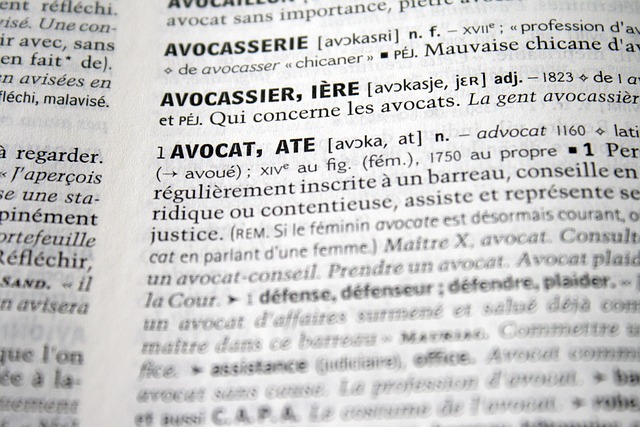Understanding appeals vs. post-conviction relief is crucial for navigating criminal justice. Appeals correct trial errors, while post-conviction relief addresses unraised issues like ineffective counsel or new evidence, offering a second chance for conviction reversal. This guide provides a step-by-step breakdown of post-conviction processes, empowering individuals to challenge their convictions and enhance legal system fairness by securing new trials or reduced sentences, especially in high-stakes cases.
Litigation Support Services play a pivotal role in ensuring justice is served efficiently. This article provides an in-depth look at two critical aspects of the legal process: Understanding Appeal Process, a step-by-step guide to navigating appeals, and Post-Conviction Relief, exploring when and how to seek relief after conviction. We also highlight the key differences between appeals and post-conviction reviews, offering strategies for effective litigation support services. By understanding these distinctions, legal professionals can better assist clients in pursuing their rights.
- Understanding Appeal Process: A Step-by-Step Guide
- Post-Conviction Relief: When and How to Seek It
- Key Differences: Appeal vs. Post-Conviction Review
- Strategies for Effective Litigation Support Services
Understanding Appeal Process: A Step-by-Step Guide

Understanding the appeal process is crucial for anyone navigating post-conviction relief. This step-by-step guide provides a clear overview for those seeking to challenge their criminal conviction. The first step involves filing a notice of appeal within a specified timeframe, which triggers a review by a higher court. Unlike direct appeal, where errors in the initial trial are challenged, post-conviction relief focuses on issues that were not previously raised or could not be effectively addressed during the original trial.
A key distinction between appeal and post-conviction relief lies in their target. While an appeal targets procedural or evidentiary errors, post-conviction relief delves into claims of ineffective assistance of counsel, newly discovered evidence relevant to guilt or punishment, or issues related to white-collar and economic crimes, where avoiding indictment is a primary concern for defendants. This process allows individuals to seek justice and potentially secure a new trial or reduced sentence, ensuring fairness in the legal system.
Post-Conviction Relief: When and How to Seek It

Post-conviction relief offers a pathway for individuals who have been convicted of crimes to seek review and potential reversal of their judgments. This process is distinct from an appeal, which typically addresses errors in the trial or sentencing phase. Post-conviction relief focuses on new evidence, changes in the law, or procedural errors that may have influenced the outcome. It’s a crucial mechanism for achieving extraordinary results in high-stakes cases where a complete dismissal of all charges is at stake.
Knowing when to pursue post-conviction relief is essential. Defendants should consider this option if they believe new evidence has emerged that could change the court’s decision, or if there were significant procedural mistakes made during their trial. Understanding these differences between appeal and post-conviction relief is vital for effective navigation of legal avenues, especially in complex criminal cases.
Key Differences: Appeal vs. Post-Conviction Review

In the legal landscape, understanding the nuances between Appeal and Post-Conviction Review is essential for both corporate and individual clients seeking justice. While both processes aim to rectify perceived wrongs, they fundamentally differ in scope and purpose. An appeal typically involves challenging the initial verdict or ruling of a case, focusing on errors in law, procedure, or fact that may have influenced the outcome. This process allows litigants to present new evidence or argue legal principles that were previously overlooked or misapplied.
In contrast, Post-Conviction Review is a more focused and strategic endeavor, often employed after an appeal has been exhausted. It delves into claims of ineffective assistance of counsel, newly discovered evidence, or errors in the application of existing laws. With an unprecedented track record of achieving extraordinary results, this review process offers a second chance for those who believe their rights were violated during trial, ensuring that justice is not only sought but also, ultimately, attained.
Strategies for Effective Litigation Support Services

In the realm of litigation support services, a strategic approach is key to achieving favorable outcomes. One of the primary differentiators between successful legal cases and others lies in the nuanced understanding of appeal processes versus post-conviction relief. While appeals focus on correcting errors in the original trial or verdict, post-conviction relief strategies target specific circumstances that may have been overlooked or misrepresented during the initial proceedings.
An unprecedented track record in litigation support often stems from this strategic discernment. By adeptly navigating the complexities of jury trials and mastering the art of avoiding indictments, legal professionals can craft robust defenses. This involves meticulous case analysis, identifying potential gaps in evidence or procedural errors, and presenting compelling arguments to sway judges’ decisions or juries’ verdicts. Such an approach not only ensures a stronger chance of success but also underscores the value of expert litigation support services.
In navigating the complex legal landscape, understanding the distinctions between appeals and post-conviction relief is paramount for effective litigation support. This article has provided a comprehensive guide through these processes, highlighting their unique roles in the criminal justice system. By comprehending the step-by-step appeal process and exploring post-conviction options, individuals can make informed decisions to challenge their convictions. Moreover, recognizing the key differences between these two avenues empowers litigators to develop strategic plans for successful outcomes, ensuring clients’ rights are protected and justice is served.






